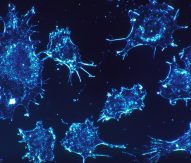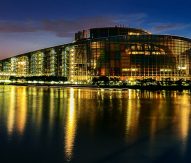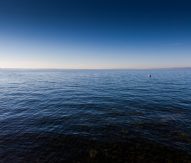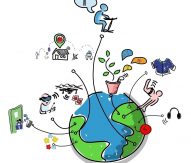
A new portal for gender equality
PEN’s Brussels editor, Michael Brennan, was invited to speak at the launch of the GenPORT resource portal and here discusses the event and his thoughts on gender policies in science.
GenPORT, an FP7 project developing a portal for quality resources on gender and science, covering multiple interest areas and resource types, was formally launched on 21 April 2016 in Brussels. In addition to providing information about published research, studies, events etc., the portal also offers access to experts and opportunities for sharing and exchanging knowledge and experience.
The launch aimed to raise awareness among relevant user communities – science, innovation, policy, politics – that GenPORT is operational and ready for full deployment, and that people can start accessing available resources (currently over 600), contribute their own resources, find collaborators and experts, announce events and so on. The event was also used as an opportunity to engage with important organisations, projects and interest groups as users, supporters, ambassadors or champions.
Following a breakfast event, a stakeholders’ forum was held featuring presentations from a range of speakers from a variety of sectors. Pan European Networks was invited to take part in a panel discussion featuring ‘partners, champions and ambassadors’, where I highlighted how, as a journalist working day to day in Brussels for an independent publishing house, I focus on the communication aspect of gender and science, and thus aimed to provide a media insight into the crucial matter of gender (in)equality in European scientific research.
Awareness
We live in a time when, perhaps, there has never been more public awareness of the gender imbalances not only within science and technology but across society at large. The past year has seen many headlines and news stories on this matter (the comments by, and subsequent resignation of, Nobel Prize winner Sir Tim Hunt being one of the most prominent).
Of course, at Pan European Networks we put out news pieces in response, but part of our effort is to go beyond the headlines to consider long-term trends, the wider implications of (and for) European policy making, and the point of view of stakeholders.
Since the launch of Pan European Networks: Science & Technology, the issue of gender imbalance has been a core focus of our editorial coverage. Amongst our work in this area, we have endeavoured to highlight the achievements of female researchers (and, here, GenPORT will play an important role moving forwards) and to consider the gender implications of European science policy making as well as the Horizon 2020 research programme.
Gender Summits
Pan European Networks has also acted as media partners for the European editions of the Gender Summits – events which provide a platform for dialogue where scientists, policy makers, gender scholars and stakeholders in science systems examine new research evidence showing when, why and how biological differences (sex) and sociocultural differences (gender) between females and males impact on outcomes.
Since their inception in 2011, we have witnessed the evolution of these conferences and, as they have grown and the sphere of their influence has spread to Africa, Asia and the USA, increasing the global dialogue, we have been, and continue to be, proud of our involvement.
The global stage
In a world that has signed up to the Sustainable Development Goals, it is important to remember that other regions are rapidly expanding their innovative capabilities and addressing gender challenges.
Yet, the gender gap, of course, continues to exist today; this is clear from the levels of inclusion, pay, the numbers of women in high level posts in universities, research institutions and innovative companies. The stated ambitions of the European Commission – to confront the gender imbalance head on – are laudable.
Within the EU’s flagship innovation programme Horizon 2020, there is a commitment to achieving gender equality, and the commission has committed to the mainstreaming of gender across the entire H2020 work programme.
So far, however, the evidence points to sluggish progress.

Visibility
One reason – but by no means the only reason – is the visibility of Europe’s female researchers. When we compile editorial pieces on gender and science, we regularly hear criticism of the way research is still conducted in Europe today; that the ‘old boy’ networks with their inbuilt bias against female researchers remain alive and well is a sentiment often conveyed, and without institutional change, the progress towards mainstreaming gender is hampered. A paradigm shift is needed and, as a publishing house with a considerable reach, we too can play a role here by highlighting this bias – and the many other biases, some of which are unconscious – and by raising the profile of these fundamental issues, as well as by helping women in science to raise their profiles and voice their arguments and concerns (and, of course, to present their work), we hope that change may come to be effected. Although, of course, we are all too aware that this change will take time.
The visibility of Europe’s female researchers is also something which will have a knock-on effect on their future success, in that, in many instances, H2020 project teams want (or need) to include a female researcher in a given discipline but don’t know where to find them. The GenPORT tool is therefore going to be fundamental here – going much further than the showcasing of a project in a science-based publication. Indeed, the importance of GenPORT in this way is underscored by the fact that research has shown that women are less likely to be the first authors of scientific papers, making them harder to find – or, at least, making them appear to be secondary in terms of expertise and experience in comparison to their male peers.
GenPORT will go some way to solving this by providing unparalleled access to the important scientific work being done by Europe’s female researchers. This will mean that those putting together research teams will be able to find a suitable member more easily, and the researchers themselves will get much more visibility, become included in high profile research, and will thus have much better career development opportunities.
Furthermore, there is an increasing body of research concerning gender itself – from personalised medicine to ergonomics to more socioeconomic studies concerning the role of women in science and technology and society more generally, and how they are treated/perceived.
The portal will not only help to highlight this work but will also help those conducting the research to become familiar with those working in the same area(s), thus boosting networking and, hopefully, co-operation and collaboration moving forwards. This will go on to have a much broader effect by helping to boost Europe’s R&D base and so help to create jobs and aid growth. The importance of recognising and including Europe’s excellent women cannot be underestimated.
Champion
At Pan European Networks, we have been, and continue to be, a champion of gender equality, and we strive to highlight the important work being undertaken by female researchers. Yet, when investigating an area for potential contributors, we are often only presented with men, and while we will often dig a little deeper to find a female researcher this is sometimes impractical due to time constraints. Moreover, while we will often do this, others may not. We do this because we are aware that Europe’s excellent women scientists are often overshadowed by their male counterparts, and so rather than this simply being an exercise in showcasing a researcher because of her sex, it is an attempt to help raise the profile of an excellent scientist who may often be overlooked.
Additionally, we regularly look for content on relatively obscure research areas, and a resource such as the portal will prove invaluable as an easily searchable and comprehensive platform, aiding us in reaching out to the scientific community and helping to communicate research results to the wider community of researchers, politicians, industry leaders and academics in both Europe and beyond, which is our number one priority.
We are, first and foremost, a communication tool, and we therefore see it as our duty not only to provide a platform for the discussion of important research areas, policy developments and results but also to highlight to all stakeholders the important issues facing Europe today, which, of course, include the gender question. We don’t only communicate these issues to the decision makers because there is a very strong sense that a bottom-up approach is required to instigate the necessary paradigm shift; if we work to educate the new generations of researchers, they will take this knowledge with them as they themselves develop within their careers, ultimately replacing the male-dominated hierarchy that persists today. What is more, in time, this will perhaps simply become second nature to the generations to come, and what we now think of as the gender question will no longer require an answer, because the question will have ceased to exist in the minds of our young people – both inside and outside the R&D sphere.
Media
Of course, the wider gender imbalances in society are all too often reflected in professional journalism. Like much of the journalistic landscape, science media needs to also address its own gender gaps. Female science writers face biases and roadblocks in a profession still dominated by men. This is part of our editorial approach at PEN. It is evident that journalists and their editors need to not only be aware of the gender challenges but also work to overcome them. This will no doubt lead to better science media reporting, better communication and ultimately – we hope – better science. Naturally, as a media professional, I view GenPORT as an exciting development in this regard, and I know that my colleagues at Pan European Networks share this sentiment.
The GenPORT launch itself saw a good level of gender balance on the panels; all too often this is not the case. Public discourse and gatherings set agendas and help to shape the ‘to do list’ of policy makers and stakeholders. The fora where we debate these crucial ideas can have an impact on policy and perception. All-male panels – which unfortunately do still exist in 2016 – should be consigned to the past.
The press and media have a clear role to play amidst this, not only by connecting the public with political and scientific leaders but also by enabling communication and promoting discussion within the scientific profession. This is especially true when it comes to attempting to bring down the silo mentality.
At PEN, we approach our scientific contributions in such a way as to, hopefully, bring readers out of their comfort zone and invite them to read about developments and results emerging from sectors other than their own because, in the modern, globalised world, there is a huge amount of crossover between disciplines (something being recognised in H2020), and this too can have an impact on the issue of gender inequality in science, not least by demonstrating that those subjects typically dominated by men and those typically dominated by women have a lot in common and, as such, there is absolutely nothing stopping one or the other from branching out and expanding their horizons.
Inspirational stories
At Pan European Networks, we report on the research community’s policies, initiatives, ambitions, and activities, as well as on the successes – or lack thereof. Importantly, the press also has the power to tell stories that can inspire change and help empower action on gender equality.
Indeed, at PEN, we understand that while our readers from across the worlds of governance, research, academia and industry may be engaged with developments in EU policy and research, they may not necessarily be scientific experts. Thus we strive to communicate news from the scientific world in an easily digestible format, ensuring that narratives from the cutting-edge of research and innovation are accessible to a non-specialist audience, perhaps inspiring those from other fields.
Hopefully, the GenPORT project, and our combined efforts, will help contribute to realising a future where we can confront the gender challenges.
Michael Brennan
Brussels Editor
Pan European Networks
This article first appeared in issue 19 of Pan European Networks: Science & Technology, available here.



